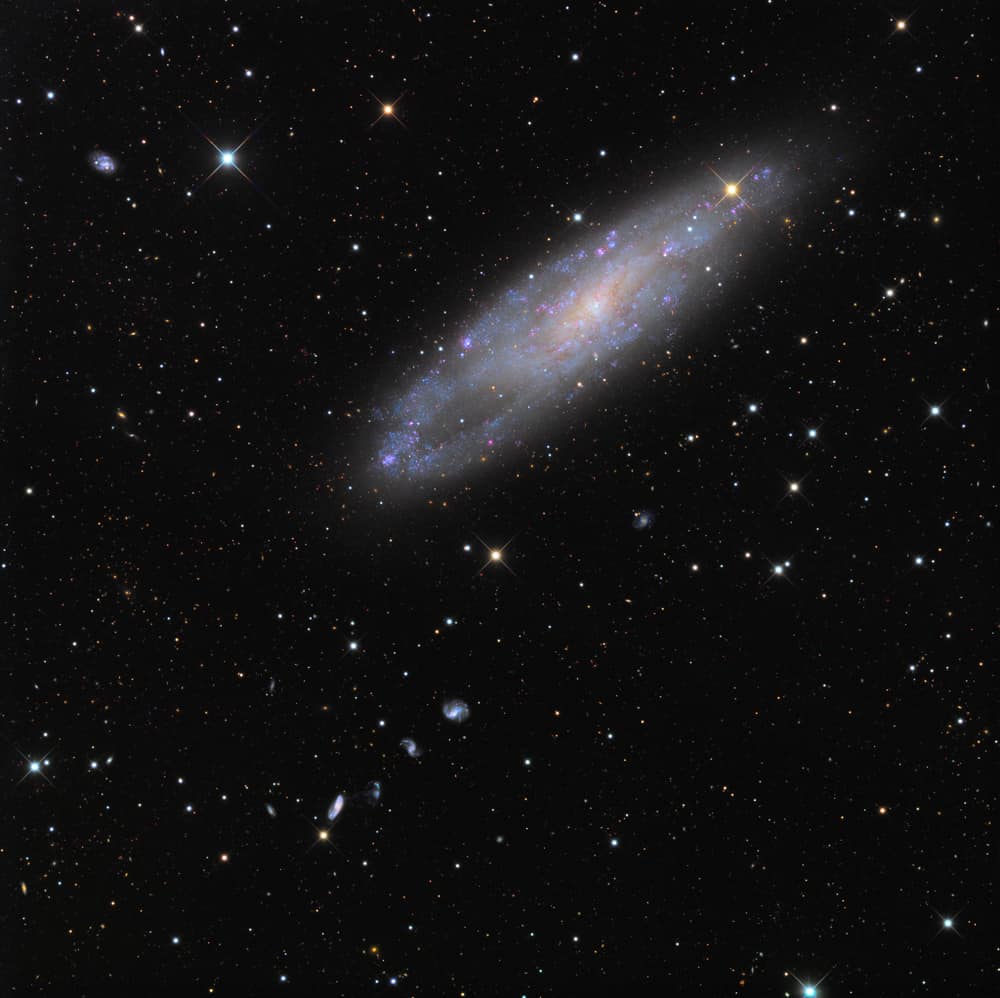Blog
Willie Lee “Big Eyes” Smith (January 19, 1936 – September 16, 2011) was a Grammy Award-winning American electric blues vocalist, harmonica player, and drummer. He was best known for several stints with the Muddy Waters band beginning in the early 1960s.
Born in Helena, Arkansas, Smith learned to play harmonica at age seventeen after moving to Chicago. Smith’s influences included listening to 78’s and the KFFA King Biscuit radio show, some of which were broadcast from Helena’s Miller Theater, where he saw guitar player Joe Willie Wilkins, and harmonica player Sonny Boy Williamson II. On a Chicago visit in 1953 his mother took him to hear Muddy Waters at the Zanzibar club, where Henry Strong’s harp playing inspired him to learn that instrument. In 1956, at the age of eighteen he formed a trio. He led the band on harp, Bobby Lee Burns played guitar and Clifton James was the drummer. As “Little Willie” Smith he played in the Rocket Four, led by blues guitarist Arthur “Big Boy” Spires, and made recordings that were later reissued on the Delmark label. In 1955 Smith played harmonica on Bo Diddley‘s recording of the Willie Dixonsong “Diddy Wah Diddy” for the Checker label. Drummers were in more demand than harp players so Smith switched to drums and starting playing with Muddy Waters band. Smith recorded with Muddy on the 1960 album Muddy Waters Sings Big Bill Broonzy, a tribute to Big Bill Broonzy.
more...About 70,000 light-years across, NGC 247 is a spiral galaxy smaller than our Milky Way. Measured to be only 11 million light-years distant it is nearby though. Tilted nearly edge-on as seen from our perspective, it dominates this telescopic field of view toward the southern constellation Cetus. The pronounced void on one side of the galaxy’s disk recalls for some its popular name, the Needle’s Eye galaxy. Many background galaxies are visible in this sharp galaxy portrait, including the remarkable string of four galaxies just below and left of NGC 247 known as Burbidge’s Chain. Burbidge’s Chain galaxies are about 300 million light-years distant. NGC 247 itself is part of the Sculptor Group of galaxies along with the shiny spiral NGC 253.

Steve Grossman (born January 18, 1951) is an American jazz fusion and hard bop saxophonist.
Born in New York City, Grossman was Wayne Shorter‘s replacement in Miles Davis‘ jazz-fusion band. Then, from 1971 to 1973, he was in Elvin Jones‘s band.
In the late 1970s, he was part of the Stone Alliance trio with Don Alias and Gene Perla. The group released four albums during this period, including one featuring Brazilian trumpeter Márcio Montarroyos. The albums also feature an array of other musicians. They went on to release three live reunion albums during the 2000s
more...Al Foster (born January 18, 1943) is an American jazz drummer. Foster played with Miles Davis during the 1970s and was one of the few people to have contact with Davis during his retirement from 1975–1981. Foster also played on Davis’s 1981 comeback album The Man with the Horn. He was the only musician to play in Davis’s band both before and after his retirement. He has toured extensively with Herbie Hancock, Sonny Rollins, and Joe Henderson.
Foster was born in Richmond, Virginia, and grew up in New York. He began playing drums at the age of 13 and made his recording debut on Blue Mitchell‘s The Thing to Do at age 20.
He joined Miles Davis‘s group when Jack DeJohnette left in 1972, and played with Davis until 1985. In his 1989 autobiography, Davis described the first time he heard Foster play live in 1972 at the Cellar Club in Manhattan: “He [Foster] knocked me out because he had such a groove and he would just lay it right in there. That was the kind of thing I was looking for. Al could set it up for everybody else to play-off and just keep the groove going forever.”
Foster began composing in the 1970s, and has toured with his own band, including musicians such as bassist Doug Weiss, saxophonist Dayna Stephens, and pianist Adam Birnbaum.
https://www.youtube.com/watch?v=_HZ5qXqEDoU
more...Vassilis Tsitsanis (Greek: Βασίλης Τσιτσάνης 18 January 1915 – 18 January 1984) was a Greek songwriter and bouzouki player. He became one of the leading Greek composers of his time and is widely regarded as one of the founders of modern Rebetiko and Laiko music. Tsitsanis wrote more than 500 songs and is still remembered as an extraordinary composer and bouzouki player.
Tsitsanis was born in Trikala. From a young age, Tsitsanis was interested in music and learned to play violin, mandola and mandolin which were mainstays of so many of his songs. In 1936, he left for Athens to study law, and by 1937 had also learned bouzouki and made his first musical recording.
In 1938, he moved to Thessaloniki, where he completed his military service, and stayed there for about ten years, during the German occupation of Greece. There he became famous, opened also an ouzeri, got married and wrote many of his best songs that were later recorded after the end of the War. By the shut-down of the record companies by the German occupation Forces in 1941, he had already recorded about 100 of his own songs and played on many recordings of other composers.
In 1946, Tsitsanis returned to Athens and began recording many of his own compositions that made famous many of the singers that worked with him, such as Sotiria Bellou (Σωτηρία Μπέλου), Marika Ninou (Μαρίκα Νίνου), Ioanna Georgakopoulou and Prodromos Tsaousakis. Tsitsanis developed the “westernization” of the rebetiko and made it more known to large sections of the population, setting also the bases for the future laiko. Vassilis Tsitsanis was a close friend with Andreas Papandreou, Prime Minister of the country. Tsitsanis died at the Royal Brompton Hospital in London following a lung operation, on his sixty-ninth birthday. He was mourned across Greece, where his music is still enjoyed to this day and he is regarded as a legend of rebetiko music.
more...Friday January 17th 2020 730pm Featuring Attorney General Keith Ellison and Rep. Frank Hornstein
more...
An innovative interpretation of X-ray data from a galaxy cluster could help scientists understand the nature of dark matter, as described in our latest press release. The finding involves a new explanation for a set of results made with NASA’s Chandra X-ray Observatory, ESA’s XMM-Newton and Hitomi, a Japanese-led X-ray telescope. If confirmed with future observations, this may represent a major step forward in understanding the nature of the mysterious, invisible substance that makes up about 85% of matter in the Universe.
The image shown here contains X-ray data from Chandra (blue) of the Perseus galaxy cluster, which has been combined with optical data from the Hubble Space Telescope (pink) and radio emission from the Very Large Array (red). In 2014, researchers detected an unusual spike of intensity, known as an emission line, at a specific wavelength of X-rays (3.5 keV) in the hot gas within the central region of the Perseus cluster. They also reported the presence of this same emission line in a study of 73 other galaxy clusters.

Michael Kevin Taylor (born 17 January 1949) is an English musician, best known as a former member of John Mayall’s Bluesbreakers (1967–69) and the Rolling Stones (1969–74). He has appeared on some of the Stones’ classic albums, including Let It Bleed (1969), Get Yer Ya-Ya’s Out! The Rolling Stones in Concert (1970), Sticky Fingers (1971) and Exile on Main St. (1972).
Since leaving the Rolling Stones in December 1974, Taylor has worked with numerous other artists and released several solo albums. From November 2012 onwards he participated in the Stones’ 50th-Anniversary shows in London and Newark, and in the band’s 50 & Counting tour, which included North America, Glastonbury Festival and Hyde Park in 2013. The band decided to continue in 2014 with concerts in the UAE, Far East & Australia and Europe for the 14 On Fire tour. He was ranked 37th in Rolling Stone magazine’s 2011 list of the 100 greatest guitarists of all time. Guns N’ Roses guitarist Slash states that Taylor had the biggest influence on him.
more...Billy Harper (born January 17, 1943) is an American jazz saxophonist, “one of a generation of Coltrane-influenced tenor saxophonists” with a distinctively stern, hard-as-nails sound on his instrument. In 1965 Harper earned a Bachelor of Music degree from the University of North Texas.
Harper has played with some of jazz’s greatest drummers; he served with Art Blakey‘s Messengers for two years (1968–70); he played very briefly with Elvin Jones (1970), he played with the Thad Jones/ Mel Lewis Orchestra in the 1970s, and was a member of Max Roach‘s quartet from 1971-1978. In 1979 Harper formed his own group, touring with it and documenting its music on the recording Billy Harper Quintet in Europe, and he was featured as a soloist on a 1983 recording, “Such Good Friends,” with virtuoso, visionary pianist and record producer Stanley Cowell. After a period of relative inactivity in the 1980s, Harper came back strong with another international tour, which ended with perhaps his most ambitious recording: the three-volume “Live on Tour in the Far East” (1991). In the new millennium Harper’s recording activity has been subdued and sporadic, though more recently he appeared as a regular member of pianist-jazz historian Randy Weston‘s ensembles. In 2013 they recorded their first album as a duo, entitled The Roots of the Blues.
A retrospective of Billy Harper’s career would include the following among its highlights: The saxophonist performed on Gil Evans‘ 1973 album Svengali, and contributed two of the most-performed tunes in the band’s repertoire: “Priestess” and “Thoroughbred”. Harper’s own 1973 album Capra Black “remains one of the seminal recordings of jazz’s black consciousness movement–a profoundly spiritual effort that channels both the intellectual complexity of the avant garde as well as the emotional potency of gospel”. The Italian jazz label Black Saint was launched with Harper’s 1975 album Black Saint. His later releases have mostly been on SteepleChase and Evidence.
https://www.youtube.com/watch?v=x2y8ISH79VA
more...
Cedar Anthony Walton, Jr. (January 17, 1934 – August 19, 2013) was an American hard bop jazz pianist. He came to prominence as a member of drummer Art Blakey‘s band before establishing a long career as a bandleader and composer. Several of his compositions have become jazz standards, including “Mosaic”, “Bolivia”, “Holy Land”, “Mode for Joe” and “Fantasy in D”.
Walton was born and grew up in Dallas, Texas. His mother Ruth was an aspiring concert pianist, and was Walton’s initial teacher. She also took him to jazz performances around Dallas. Walton cited Nat King Cole, Bud Powell, Thelonious Monk and Art Tatum as his major influences on piano.He began emulating recordings of these artists from an early age.
After briefly attending Dillard University in New Orleans, he went to the University of Denver as a composition major originally, but was encouraged to switch to a music education program targeted to set up a career in the local public school system. This switch later proved extremely useful since Walton learned to play and arrange for various instruments, a talent he would hone with Art Blakey’s Jazz Messengers.
Walton was tempted by the promise of New York City through his associations with John Coltrane, Charlie Parker, and Richie Powell, whom he met at various after-hours sessions around the city of Denver, Colorado. In 1955, he decided to leave school and drove with a friend to New York City. He quickly got recognition from Johnny Garry, who ran Birdland at that time.
https://www.youtube.com/watch?v=TMviozrmPAY
more...Sidney “Big Sid” Catlett (January 17, 1910 – March 25, 1951) was an American jazz drummer. Catlett was one of the most versatile drummers of his era, adapting with the changing music scene as it progressed toward bebop. Catlett was born in Evansville, Indiana and at an early age he was instructed in the rudiments of piano and drums under the tutelage of a music teacher hired by his mother. When he and his family relocated to Chicago, Catlett received his first drum kit, and immersed himself in the diverse styles and techniques of Zutty Singleton, Warren “Baby” Dodds, and Jimmy Bertrand, among others. In 1928, Catlett began playing with violinist and clarinet player Darnell Howard, before joining pianist Sammy Stewart’s Orchestra in New York City and making appearances at the Savoy Ballroom.
After performing for several lesser established musical acts, Catlett began recording and performing with multiple musicians including Benny Carter, McKinney’s Cotton Pickers, Fletcher Henderson, and Don Redman throughout the 1930s. Between 1938 and 1942, Catlett was Louis Armstrong‘s drummer of choice as he was regularly featured in Armstrong’s big band, while also periodically joining Benny Goodman‘s group. Following a brief stint in collaboration with Duke Ellington in 1945, Catlett led some of his own bands through the remainder of the 1940s, and was involved in Armstrong’s All-Stars between 1947 and 1949.
https://www.youtube.com/watch?v=x4AFZCQoo0U
more...Alegrías (Spanish pronunciation: [aleˈɣɾi.as]) is a flamenco palo or musical form, which has a rhythm consisting of 12 beats. It is similar to Soleares. Its beat emphasis is as follows: 1 2 [3] 4 5 [6] 7 [8]9 [10] 11 [12]. Alegrías originated in Cádiz. Alegrías belongs to the group of palos called Cantiñas and it is usually played in a lively rhythm (120-170 beats per minute). The livelier speeds are chosen for dancing, while quieter rhythms are preferred for the song alone.
One of the structurally strictest forms of flamenco, a traditional dance in alegrías must contain each of the following sections: a salida (entrance), paseo (walkaround), silencio (similar to an adagio in ballet), castellana (upbeat section) zapateado (Literally “a tap of the foot”) and bulerías. This structure though, is not followed when alegrías are sung as a standalone song (with no dancing). In that case, the stanzas are combined freely, sometimes together with other types of cantiñas.
more...More Posts
- World Music with Minor Empire
- Daily Roots with Bob Marley
- MAROONS aka Mojo Roots at St Paul Winter Carnival 1-25-18
- BEAU KOO JACKS Perform Sunday 1-28-18 @ Amsterdam Bar for Walker West Music School
- The Cosmos with Roberts Quartet NGC 87, NGC 88, NGC 89 and NGC 92
- Bill Ware Day
- Ronnie Scott Day
- John Williams Day
- Big Eye Louis Nelson Day
- World Fusion with Celtic/Folk Welsh group Bob Delyn a’r Ebillion
- Daily Roots with the Stingers 1-28-18
- “Consciousness Altering Cultures in Harmony” SONG OF WONDER Concert SYNOPSIS
- Song of Wonder
- Comparison of DW and Sonor Drums
- Rhythm Roots Workshop
- Beau Koo Jacks Performing on Mardi Gras
- MAQAM Arabic Music Ensemble at East Union Elementary
- ENSEMBLE ESPANOL 2013 Florida Tour
- Positive Vibrations
- MARDI GRAS DAY with the Beau Koo Jacks 2-12-13


